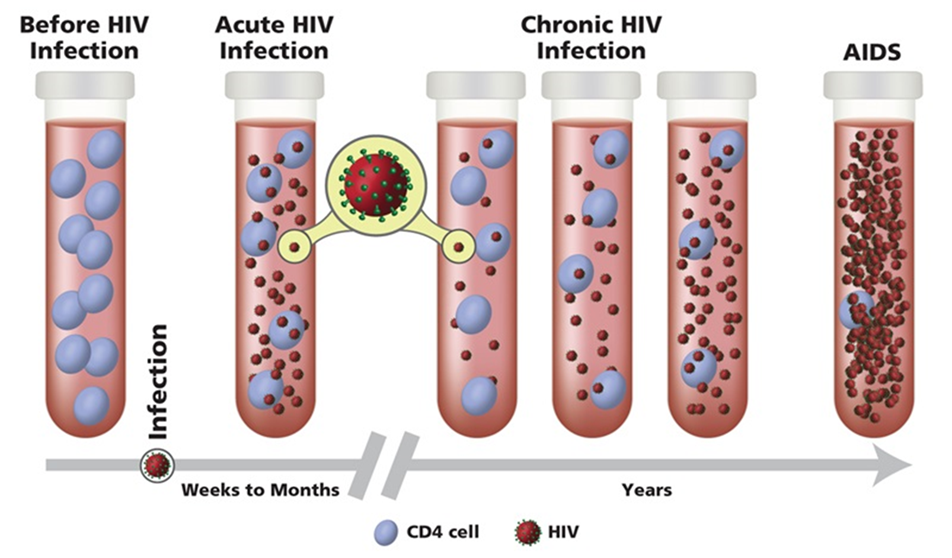What Is Your Viral Load?
When your blood is drawn at a Treatment Site, your health care provider is checking your viral load to assess how well your medication is working to lower the amount of HIV cells in your body. Viral load refers to the number of HIV cells detected in any given blood sample. Health care providers use this measurement to understand how much HIV is replicating in your body.
Typically, a high viral load is noted to be approximately 100, 000 copies of the virus per ml, while a low viral load is below 10,000 copies per ml of the virus. The aim of treatment is for you to arrive at a viral load that is less than 20 copies per ml of blood. In this case, you will be undetectable.
What Is Your CD4 Count?
When the virus enters your body, it takes over your CD4 cells or T cells, the white blood cells that fight infection in your body. Over time, HIV destroys the CD4 cells, which reduces the number left to defend your body against infections and diseases.
Your CD4 count is the number of CD4 cells found in any given blood sample. Health care providers use your CD4 count to determine how well your immune system is working. Your Antiretroviral treatment (ART) works to not only strengthen the T cells left, but also to help your body to make more and stronger defender cells to fight the virus.
A normal CD4 count falls in the range of 500 to 1,400 cells per cubic millimeter of blood. You are more likely to contract opportunistic infections at levels below 200 cells per cubic millimeter.
Stages Of HIV Infection
Without any treatment, HIV will cause a decrease in CD4 cells and an increase in viral load over time. The diagram below shows the stages of HIV infection over several years as HIV destroys CD4 cells.
